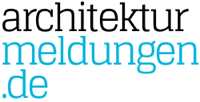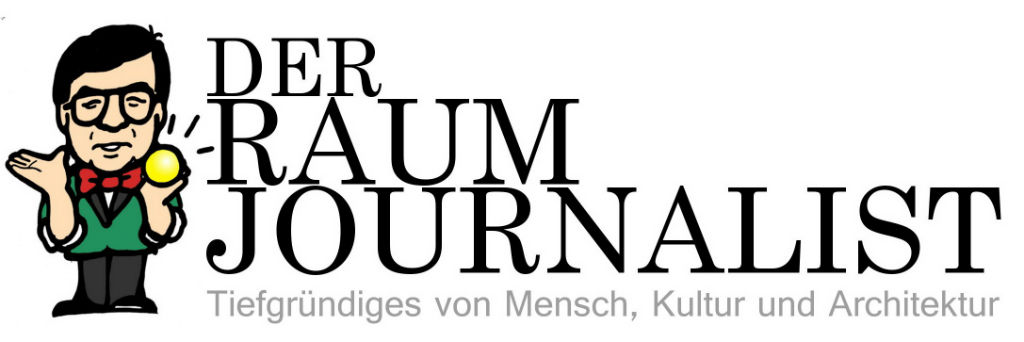Painted Architectures: Spanish post-conceptual Figuration. INTERVIEW with Roberto Moll├Ī
In autumn 2017, Berlin project space MEINBLAU showed “Gemalte Architekturen” (Painted architectures), an exhibition of seventeen Spanish artists. They are known in Spain as representing the Spanish post-conceptual figuration, and have been instrumental in renewing figurative painting over the past four decades. In their works, they use architecture and spatial geometry as a structural center: be it as the main motif, background, frame or as a symbolic element.

HARUMI APARTMENTS, colored pencils, gouache and ink on graph paper, 90 x 65 cm, 2017
Post-conceptual figuration is an artistic style that emerged in Spain in the early 1970s, a term coined by Paco de la Torre. The aim was to redesign figurative painting from the point of view of personal poetics. The group exhibition curated by Juan Cu├®llar and Roberto Moll├Ī was devoted to the role of the architectural and geometric image in the works of these artists in particular.
We are proud to be able to present you deconarch.com interview series with four of the post-conceptural Spanish artists within the following weeks: We were emailing with ├üngel Mateo Charris, Roberto Moll├Ī, Jorge Tarazona┬Ā and Paco de la Torre about their work, the meaning of architectural motives therein and the merits of painting.
all illus. (c) Roberto Moll├Ī
www.robertomolla.com
INTERVIEW
Why the focus on architecture, architectural motives? How does it go along with the focus of your work?
You donŌĆÖt have to dig very deep into the history of art to find artworks that analyse architecture and urban scenes as setting or subject of the pictorial space: Giotto, Fra Angelico, Degas, Hiroshige, Sironi, Grosz, De Chirico, Hopper, Deineka, Hockney, Katz, ŌĆ”
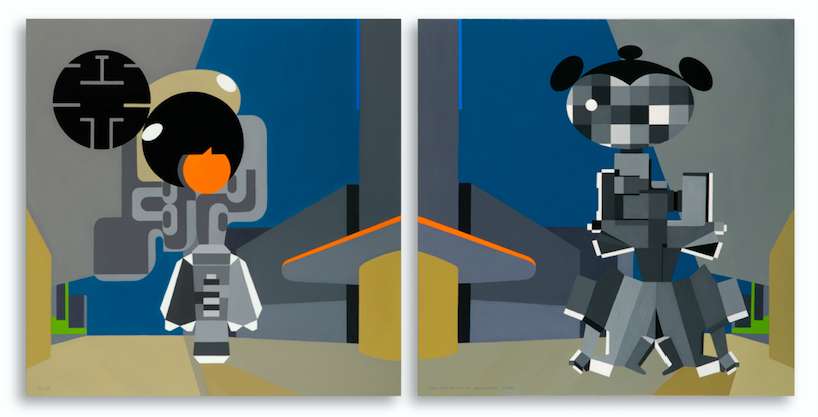
CARIACONTECIDOS EN IKEBUKURO, oil on canvas, 120 x 240 cm, 2008
Many of my artworks show scenes of urban life, home interiors and fa├¦ades. One of my drawings on graph paper took its title after this verse of Picabia: ŌĆ£The city lies above the symmetrical mud.ŌĆØ I see the city as an invention that organizes, weights and sells by portion the chaos of rocks and mud on which it sits. And thatŌĆÖs exactly what an artist does, ŌĆ£to find a form that accommodates the messŌĆØ, as Samuel Beckett said. There are obvious analogies between urban planning, architecture and painting or drawing. Architects and painters, also poets and musicians, explore the same path and use similar creative strategies.
Over twenty years ago I started drawing on graph paper in a notepad of my fatherŌĆÖs and since then IŌĆÖve found it unpleasant to work on blank surfaces. The grid offers an abstract and mathematical context over which one can drop diverse images that the grid then helps to connect. Architectural motives are also a mathematical context that offers to artists an internal skeleton or structure, a form which contains all the others which arise from it.
How is your working process? Is it a conceptual approach or do the motives just “happenŌĆ£?
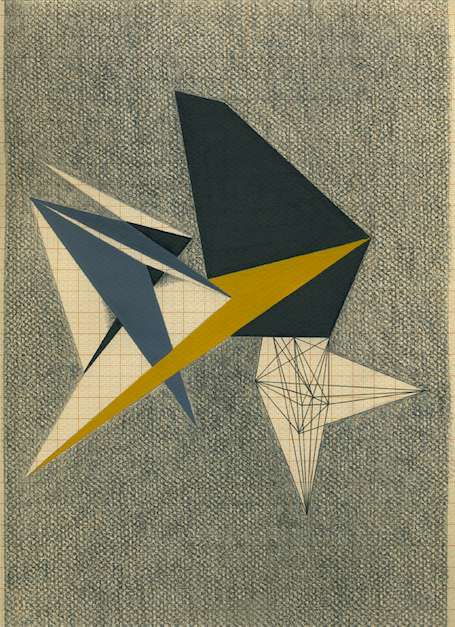
SAD DIAMOND (4), pencil, gouache and ink on graph paper.,29,7 x 21 cm, 2014
Most of my abstract images are built in the same way a ray-tracing software would do. Drawing automatically, without a previous sketch, lines that change their directions as they impact with some random points, intersecting between them and creating shapes and triangles. But sometimes my drawings and paintings are more narrative, inspired by music, literature and personal memories. Then I play with the tension between geometric and organic elements, and the friction created in the found or imagined images. Usually I just start drawing on graph paper and thatŌĆÖs all, but sometimes I do mix some different sketches and photographs in my computer, like a cosmic cocktail that mixes fragments of reality and unconscious imagination. The digital collage then is reassembled in a new drawing once again, several times so, if needed. At the beginning thereŌĆÖs usually an automatism that later, sometimes, turns into an idea.
Why painting? Which possibilities does painting offer to you?
Why not? I wonder why painting is devalued so much. I cannot imagine a better tool to question the nature of reality, a better medium to include diverse layers of meaning, to defy the laws of perspective, time and space. Painting is a space of absolute freedom. Is a surface in which everything can happen, and thatŌĆÖs fascinating and also scary. Picabia knew that, as well as Polke, Guston, Kippenberger, Tuymans or Neo Rauch. In contrast with an institutionalized and assimilated contemporary style, the work of many good painters is anything but conventional, and that should be reason enough to maintain our commitment with painting.
Are there role models, influences, which inspire your work?
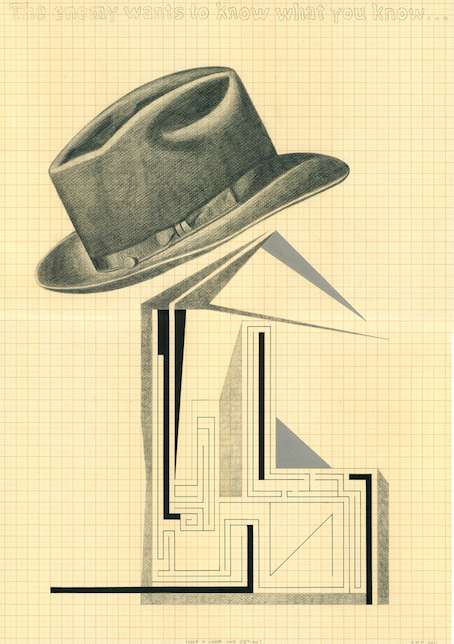
THE ENEMY WANTS TO KNOW WHAT YOU KNOW (KEEP IT UNDER YOUR STETSON), pencil, gouache and ink on graph paper, 59 x 41 cm, 2011
My work has referenced the historical Japanese ŌĆ£floating worldŌĆØ ukiyo-e wood-block prints as well as the drawings of naturalist Ernst Haeckel or the hard-edged linework inspired by mid-20th century modern geometric painters including Manuel Barbadillo, Pablo Palazuelo, Julio Le Parc or Edward McKnight Kauffer, among others. Quoting other artists has always been a good creative strategy, a way of knowing other worlds and modifying them. I have a deep devotion to Francis Picabia. I admire his unshakeable will to be unfaithful to any notion of style, his combative intellectual spirit against the myth of the modern artist. His work is always smart, fun, violent and full of poetry. A list of artists that I appreciate would be endless and heterogeneous and would also include writers, musicians, architects, etc. And also many of my friends with whom I share projects, chats, beers, music, summer trips and exhibitions.
Together with Juan Cuellar, you curated “Gemalte Architekturen” in Berlin, which was not your first exhibtion project. Tell us more about your exhibition projects!
We both are the founders of Encapsulated (Encapsulados), an artistic project that, since┬Āour first scheduled exhibition, 10 years ago, has curated fourteen exhibitions. Our projects usually have been installed at unique and unpredictable locations such as, for example, the interior of a water tank in Valencia or the tiny room of a Capsule Hotel in Tokyo. But we have also exhibited in museums such as the TOTAL in Seoul and the BeijingŌĆÖs TAM. We have been installing exhibitions mainly in Spanish cities, but also in Berlin, NY, Miami, Hanoi and Tokyo.
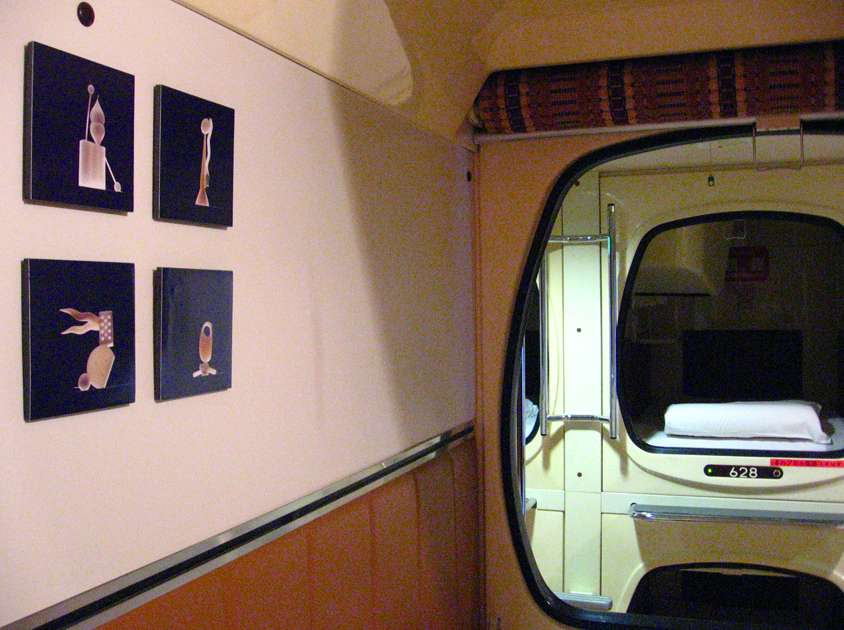
INSTALLATION by ENCAPSULADOS at SIESTA CAPSULE HOTEL, TOKIO, Artworks by Teresa Tom├Īs.,2007
Our name, Encapsulated, comes from that first installation in a Capsule Hotel in Tokio. On the 18th of September 2007, a group exhibition by 11 contemporary Spanish artists was inaugurated in Capsules 610 and 612 of the Siesta Hotel. The exhibit┬Āwas an evident heir of the bo├«te-en-valise by Duchamp and the Shandy conspiracy narrated by Vila-Matas in which one of the essential requirements to form a part of this aforementioned conspiracy was that the artistic work had to fit inside a briefcase.
In that case, all the exhibitŌĆÖs works ŌĆō 21 paintings, drawings, and photographs ŌĆō were transported to the corresponding capsules in a pair of toiletry bags. There is no country more appropriate than Japan, where smallness is venerated, to host an exhibition paying homage to the small format as opposed to the gigantism which represents the majority of todayŌĆÖs contemporary art.
Our next project is an exhibition titled PLEX that will show artworks painted and drawn on folded paper. It will be exhibit at the Fine Arts Museum of Castell├│n next spring and will show artworks by 12 contemporary Spanish artists.
Roberto Moll├Ī, gracias for sharing your thoughts with us!




